This guide demystifies the sfp connector and qsfp connector families so you can choose the right port and module with confidence. We’ll start with a quick SFP vs QSFP comparison, define each form factor, highlight the practical differences (lanes, density, cabling, use cases, thermals, compatibility), and finish with a step-by-step checklist for selecting SFP transceivers that match your speed, reach, and plant.
|
Item |
SFP |
QSFP |
|
Electrical lanes |
1 lane |
4 lanes (QSFP-DD = 8 lanes) |
|
Common speeds |
1G (SFP), 10G (SFP+), 25G (SFP28), 50G (SFP56, PAM4) |
40G (QSFP+), 100G (QSFP28), 200G (QSFP56, PAM4), 400/800G (QSFP-DD) |
|
Front connectors |
LC (optics), RJ-45 (copper), fixed DAC/AOC |
MPO/MTP (parallel), some LC (e.g., LR4/CWDM4), fixed DAC/AOC |
|
Typical roles |
Access/edge uplinks, server NICs, ToR short runs |
Aggregation/spine/backbone, high-bandwidth uplinks |
|
Breakout support |
N/A (single lane) |
Yes (e.g., 100G → 4×25G, 40G → 4×10G) — device-dependent |
|
Power/thermals |
Lower (varies by module; RJ-45 higher) |
Higher at top speeds; plan airflow |
|
Compatibility notes |
Many SFP+ ports run 1G SFP; some SFP28 can downshift to 10G |
Breakout/speed-step features depend on platform/firmware |
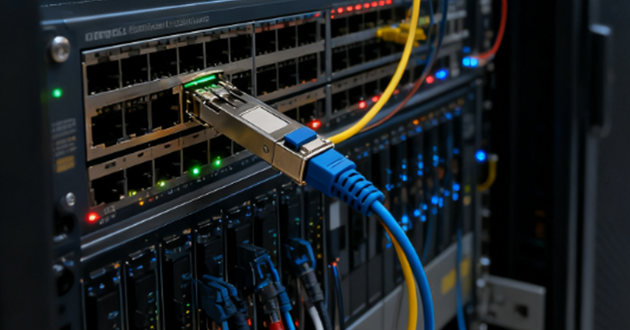
An SFP (Small Form-factor Pluggable) is a hot-swappable, single-lane transceiver: the switch/router/NIC provides the internal electrical interface, while the sfp connector on the bezel presents the external physical interface—typically LC for optics or RJ-45 for copper. The SFP family spans SFP (1G), SFP+ (10G), SFP28 (25G), and SFP56 (50G, PAM4), with specialized variants such as BiDi (single-fiber), CWDM/DWDM (wavelength-specific), and pre-terminated DAC/AOC for short, tidy runs.
Electrically, SFPs align with host line codes (e.g., 1000BASE-X, 10GBASE-R, 25GBASE-R) and expose DOM/DDM over I²C (temperature, voltage, Tx/Rx power) so you can monitor link health and power budget. RJ-45 SFP connector modules embed a full BASE-T PHY with DSP for echo/NEXT cancellation—great for reusing Cat5e/6/6A—at the cost of higher power and a touch more latency than optics or DAC. In practice, SFPs dominate the access and server edge: 1G for management/legacy, 10G SFP+ for ToR uplinks and low-latency hosts, 25G SFP28 for leaf–spine, and 50G SFP56 where single-lane PAM4 is supported. Many SFP+ cages accept 1G SFPs, and some SFP28 ports can run 10G—always per platform capabilities.
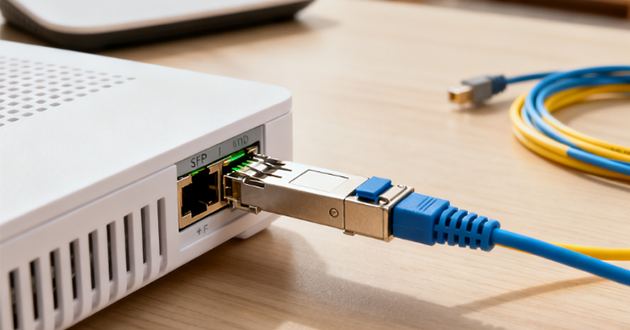
QSFP (Quad Small Form-factor Pluggable) extends the SFP idea to four electrical lanes in one module (and eight in QSFP-DD). Each generation scales total bandwidth by lane speed: QSFP+ 40G (4×10G NRZ), QSFP28 100G (4×25G NRZ), QSFP56 200G (4×50G PAM4), and QSFP-DD 400/800G (8×50/100G). On the front, a qsfp connector typically uses MPO/MTP for parallel fiber, while some long-reach 100G options (e.g., LR4/CWDM4) expose duplex LC by multiplexing wavelengths inside the module.
A signature advantage of the qsfp connector is breakout: one QSFP port can fan out to multiple lower-speed links (for example, 100G → 4×25G SFP28, 40G → 4×10G SFP+) when the platform and cables support it—ideal for aggregation and spine layers that need high throughput with flexible downstream connectivity. At higher rates, expect PAM4 signaling, often mandatory FEC, and a larger power/thermal envelope, so plan airflow and spacing carefully in dense faceplates.
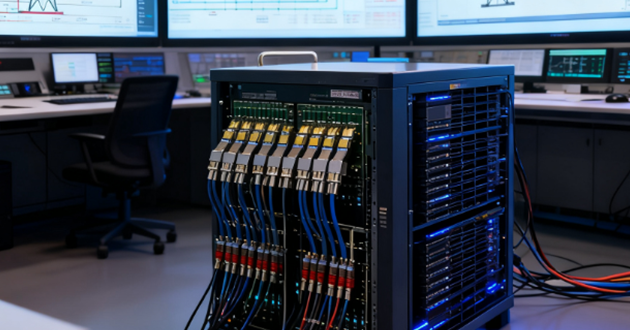
An sfp connector carries a single electrical lane, while a qsfp connector aggregates four lanes in one module (eight in QSFP-DD). More lanes mean higher aggregate bandwidth and the option to fan out a fast port into several slower ones (e.g., 100G → 4×25G). Per-lane signaling evolves with generations: earlier parts use NRZ, newer 50G/200G+ families use PAM4, which typically pairs with FEC to meet BER targets. In practice, plan topology around lane count × lane rate, not just the headline speed.
On the same faceplate, QSFP delivers more total throughput per rack unit, whereas SFP maximizes port count for edge/access fan-out. Many fixed switches mix both: rows of sfp connector cages for 1/10/25G endpoints, plus qsfp connector rows for 40/100/200G uplinks. Think QSFP for bandwidth consolidation, SFP for many endpoints, balancing panel space, switch silicon, and cabling complexity.
SFP optics typically present LC duplex (or RJ-45 for copper), keeping patching simple and fiber counts low. A qsfp connector commonly uses MPO/MTP for parallel optics; some long-reach 100G options (e.g., LR4/CWDM4) still expose LC by multiplexing wavelengths inside the module. With MPO/MTP, mind polarity, pinned/unpinned ends, and trunk quality; for breakouts, use MTP→4×LC harnesses. Across both families, clean endfaces matter—contamination is a classic cause of intermittent flaps.
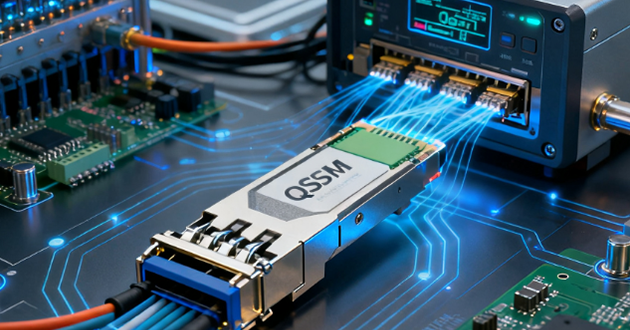
SFP dominates access and server NICs: 1G for management, 10G SFP+ for ToR/server links, 25G SFP28 for modern leaf–spine, and 50G SFP56 where single-lane PAM4 is available. QSFP owns aggregation, spine, and backbone at 40/100/200/400G+, and can break out to SFP speeds to feed many lower-rate ports from a single high-rate uplink. This split keeps fabrics scalable and lets you right-size optics per hop.
Higher-rate QSFP modules draw more power and need stronger airflow (QSFP28 often ~3.5–5 W; QSFP-DD higher). Dense SFP banks still need care: RJ-45 SFPs are notably warm (~2–3+ W), and some SFP28 optics approach ~2 W. Leave breathing room, avoid tight cable bundles over vents, and watch DOM temperatures to catch hot spots before they cause throttling or flaps.
Many SFP+ ports accept 1G SFPs; some SFP28 ports can operate at 10G with the right optics/cables—but behavior is platform-specific. QSFP features like breakout and speed profiles are firmware-controlled; always consult the device’s optics matrix. Physical cross-fit isn’t 1:1—QSFP cages don’t accept SFP modules directly (there are QSA adapters, but they’re vendor-specific). Also factor in EEPROM coding/whitelists and FEC policy at higher speeds to avoid link-up surprises.
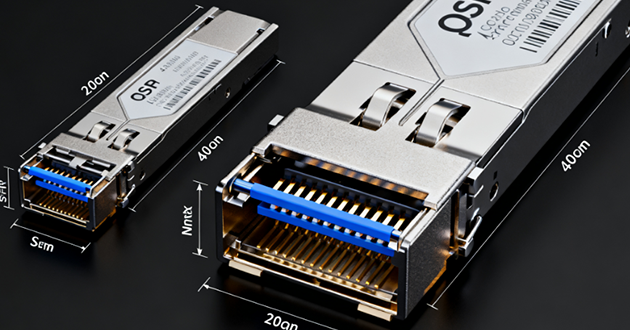
Match the port’s rate/encoding (1/10/25/50G; NRZ or PAM4) and any FEC requirement. Many 25G links assume RS-FEC to meet BER targets. Check if the slot supports downshift (e.g., 10G on an SFP28 port) and whether newer cages accept older modules. Fiber links are generally fixed-rate, so both ends must agree on speed and FEC. If you’re mixing SFP connector and QSFP uplinks, confirm the host profile and breakout rules before choosing the sfp connector type.
Select optics by distance and fiber: SR on OM3/OM4 for short runs; LR/ER/ZR on OS2 for long spans; BiDi for single-strand links; CWDM/DWDM when you need wavelength multiplexing. For very short, clean paths, use DAC (≈1–5 m) or AOC (≈3–30 m). Reusing copper? Choose an RJ-45 SFP (≤100 m; 10GBASE-T typically needs Cat6A). Always validate the link budget—reach depends on TX power, path loss, and RX sensitivity.
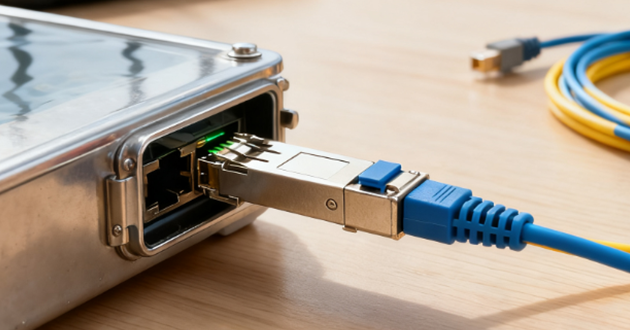
Ensure the module’s front end—LC, RJ-45, or MPO/MTP—matches your patch field and polarity. Keep LC ferrules clean; many intermittent flaps are contamination, not optics. Do a quick budget check (TX power − total loss ≥ RX sensitivity) and remember extra panels/splices consume margin. Document which sfp connector types sit at each panel to avoid turn-up mismatches.
Verify vendor coding/whitelists, available DOM/DDM telemetry, and any downshift behavior your ports support. When mixing brands, align EEPROM profiles and alarm thresholds to prevent nuisance warnings. Confirm software as well—some platforms enable FEC or special modes only on specific releases, and certain sfp cages enforce stricter checks.
Check module wattage and chassis airflow—dense faceplates and RJ-45 SFPs run warm. Align airflow direction across gear, avoid tight cable bundles over vents, and leave breathing room where possible. For harsh sites, pick industrial/extended-temp optics and consider coated PCBs, locking latches, and sealed sfp connector / sfp cage options.
Standardize a compact kit—SR, LR, DAC, RJ-45—and label modules clearly. Monitor DOM/DDM (temperature, Tx/Rx power, laser bias) and alert on trends, not just hard thresholds. Keep dust caps and a cleaning kit with your spares; in practice, more links are fixed with swabs and alcohol than with new optics.
With these checks, you’ll know when SFP suits flexible edge/access links and when a QSFP uplink is the better fit—while selecting SFP transceivers and the right sfp connector for your distance, cabling plant, thermal envelope, and platform compatibility.
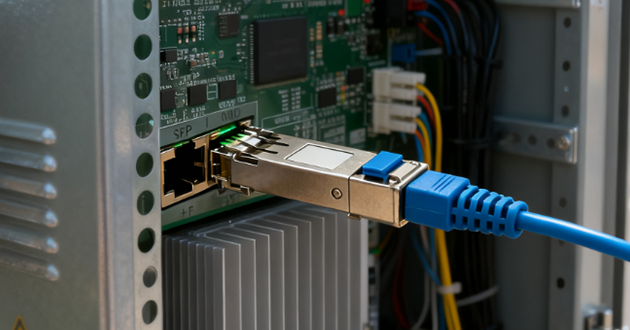
Conclusion
When you decide between SFP and QSFP, think in lanes and roles: use sfp connector ports for flexible edge/access fan-out and qsfp connector ports for high-bandwidth aggregation—with breakout where your platform allows. Before ordering, align speed/encoding and FEC at both ends, verify compatibility (coding/whitelists, breakout rules), validate link budget, and account for power/thermals.